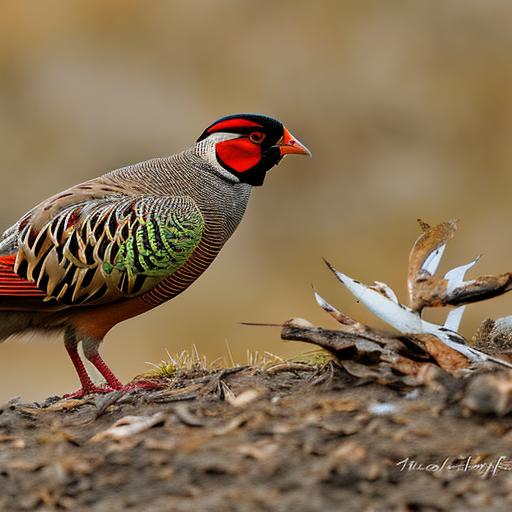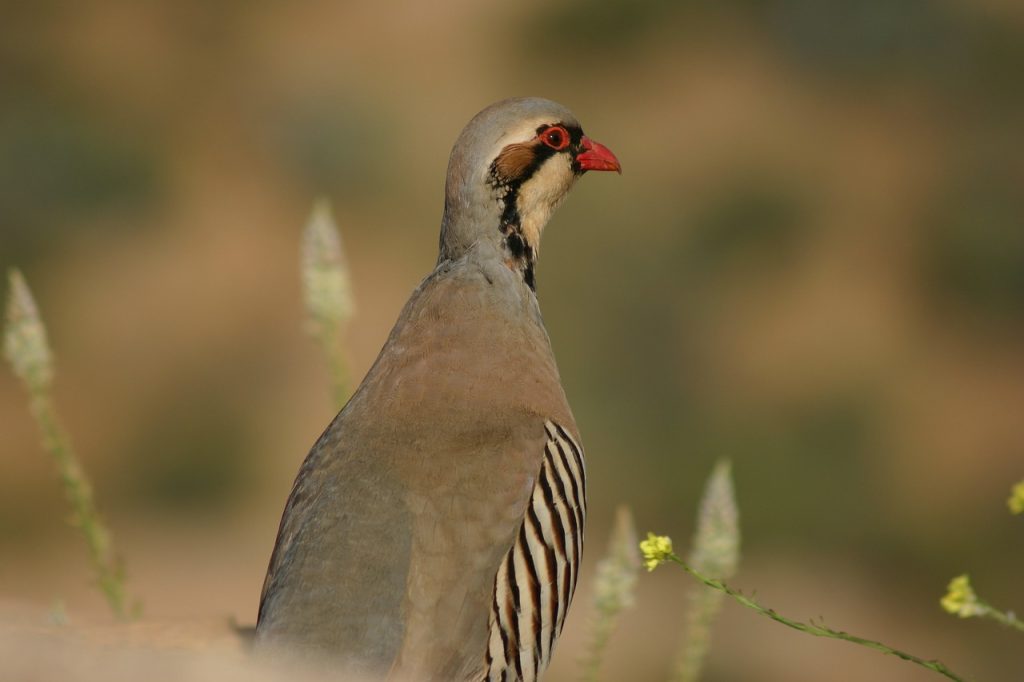Your cart is currently empty!

Chukar vs Pheasant: Differences Every Hunter Must Know!

Table of Contents
Introduction
Hey fellow hunters! If you’ve ever found yourself scanning the horizon, trying to spot your next game bird, you’ve likely come across the age-old debate: chukar or pheasant? Both of these birds offer a unique hunting experience, and trust me, understanding the nuances between them can make all the difference out in the field. I’ve spent countless hours, boots on the ground, tracking, and hunting these feisty birds. And while both can offer a thrilling chase, they’re as different as night and day in many respects. Whether you’re a seasoned hunter looking to diversify your game or a newbie just starting to get your feet wet (or should I say, boots muddy?), this guide is for you. We’ll delve deep into the world of chukar and pheasant, highlighting the key differences and offering some tried-and-true tips from my years in the field. So, grab your gear, and let’s dive in!
Physical Characteristics and Identification
Chukar:

Ah, the chukar. This bird is a beauty in its own right. Typically, chukars are about the size of a plump pigeon, weighing in at around 1 to 1.5 pounds. Their coloration is a mix of grey, black, and white, but what really sets them apart are those distinctive black and white bars on their flanks. And let’s not forget that bright red beak and eye-ring – it’s like nature’s own little target for us hunters. Their legs? A robust reddish-orange. When you spot one, you’ll know it. They have this rugged, wild look about them, perfectly suited for the rocky terrains they call home.
Pheasant:

Now, onto the pheasant. These birds are a bit larger, often weighing between 2 to 3 pounds for the males, or “roosters” as we often call them. Their coloration is a dazzling display of nature’s artistry. Roosters boast a mix of bright colors – shimmering greens, golds, and reds, with a distinctive white ring around their neck. Their tail feathers are long and pointed, often with a mix of rusty browns. The hens, on the other hand, are more muted in color, blending in with their surroundings with brown and tan patterns. But don’t let their subdued colors fool you; these birds are just as challenging and rewarding to hunt.
Tips for Quick Identification in the Field:
Alright, so you’re out in the field, and a bird takes flight. How do you quickly identify it? Here are a few quick tips:
- Size and Shape: Chukars are more compact, while pheasants have a longer body and tail.
- Color: Remember the bright red beak and eye-ring for chukars and the dazzling colors of the pheasant roosters.
- Flight Pattern: Chukars have a rapid, direct flight, often staying low. Pheasants, on the other hand, might startle and burst into the air with a flurry, but they tend to glide after the initial takeoff.
- Sound: If you’re close enough, chukars have a distinctive, loud call that sounds like “chuk-chuk-chuk.” Pheasants have a cackling call, especially when they’re spooked.
Remember, the more time you spend in the field, the better you’ll get at identifying these birds on the fly. And trust me, there’s nothing quite like the thrill of spotting and identifying your game before making that perfect shot. Happy hunting!
Preferred Habitats and Terrains
Chukar:
Let’s kick things off with the chukar, a bird that seems to have a penchant for challenging terrains. Chukars are lovers of rocky outcrops, steep cliffs, and arid landscapes. Think of them as the mountain climbers of the bird world. They’re most commonly found in the rugged terrains of the western U.S., especially in areas with a mix of bare ground and sparse vegetation. These birds are tough, and they’ve adapted to some of the harshest environments. If you’re hunting chukar, be prepared for a workout. They love to run uphill and fly downhill, making the chase both exhilarating and, at times, downright exhausting.
Pheasant:
Pheasants, on the other hand, are creatures of the plains. They’re most at home in grasslands, agricultural fields, and wetlands. These birds prefer areas with tall grasses and crops, which offer them both food and cover. If you’re in the Midwest, you’re in prime pheasant territory. States like South Dakota, Nebraska, and Iowa are known for their abundant pheasant populations. When hunting pheasants, be ready for them to burst out of cover when you least expect it. They’re ground dwellers but are known for their explosive takeoffs when startled.
Gaining an Edge with Habitat Knowledge:
Now, understanding these habitats isn’t just about knowing where to find these birds; it’s about gaining a strategic edge. Here’s how:
- Terrain Familiarity: Knowing the lay of the land can help you predict bird behavior. Chukars, for instance, will often lead you on a merry uphill chase, only to fly back down once you’ve reached the top. Anticipate this, and you can position yourself for a better shot.
- Cover and Concealment: Pheasants are masters of hide and seek. They’ll hunker down in tall grasses, waiting for the last possible moment to take flight. By understanding their preferred hiding spots, you can approach more stealthily and increase your chances of a successful flush.
- Weather and Habitat: Both birds are affected by weather conditions. After a rain, pheasants might head to the edges of fields and roads to dry off. Chukars, in the heat, might be found near water sources. Use these tidbits to your advantage.
In the end, hunting is as much a game of strategy as it is of skill. The more you understand about where your game lives, feeds, and hides, the better prepared you’ll be for the hunt. And trust me, there’s no better feeling than outsmarting a wily bird in its own backyard.
Hunting Techniques and Strategies
Chukar:
Hunting chukar is not for the faint of heart. These birds are tough, wily, and they know their terrain better than most of us ever will. But with the right approach, you can level the playing field.
- Gear Up Right: Given the rugged terrains chukars love, a good pair of hiking boots is essential. You’ll also want lightweight, durable clothing that can handle the rough and tumble of rocky outcrops. A lightweight, over-and-under shotgun with a modified choke is often the weapon of choice.
- Calls and Sounds: While there are chukar calls available, many hunters find success by simply mimicking the bird’s distinctive “chuk-chuk-chuk” call. It can help locate a covey and sometimes even draw curious birds closer.
- Stalking Techniques: Chukars have sharp eyes, so stealth is key. Use the terrain to your advantage, approaching from below or using natural cover. Remember, they often run uphill and fly downhill, so anticipate their moves and position yourself accordingly.
Pheasant:
Pheasants, with their explosive flights and vibrant colors, offer a different kind of challenge.
- Gear Recommendations: Given the flatter terrains pheasants prefer, a good pair of waterproof boots will serve you well, especially if you’re trudging through wet fields. A 12-gauge shotgun with a modified or improved cylinder choke is ideal for these birds.
- Calls and Sounds: Pheasant roosters have a distinctive crowing call, but when hunting, a pheasant call can be useful to keep birds from flushing too early or to draw them out of thick cover.
- Stalking Techniques: Pheasants are ground birds, and they’ll often prefer to run rather than fly. Using hunting dogs can be a game-changer. They can help locate, flush, and retrieve birds. If you’re going solo, walk in a zigzag pattern through fields to increase your chances of flushing a bird.
Adapting to Bird Behavior and Environment:
Both birds, while different, share a keen sense of survival. Here are some universal tips:
- Stay Downwind: Both chukars and pheasants have a keen sense of smell. Always approach from downwind to avoid being detected.
- Watch the Weather: Birds behave differently based on the weather. On colder days, pheasants might huddle in thicker cover, while chukars might seek sunlit spots on chilly mornings.
- Stay Quiet: It might sound obvious, but it’s easy to get chatty, especially if you’re hunting with buddies. Keep the noise down, and let the environment speak to you.
Remember, hunting is as much about the experience as it is about the catch. Every outing teaches you something new. So, gear up, head out, and let the adventure begin!
Related Questions
How does the taste of chukar compare to pheasant?
Ah, the age-old question of taste! Chukar meat is tender, with a mild, slightly sweet flavor – think of it as the chicken’s adventurous cousin. Pheasant, on the other hand, has a richer, more robust flavor, often described as “gamey” but in the best way possible. Both are delightful, but the preference often boils down to individual taste buds.
What are the best seasons to hunt chukar and pheasant?
For chukar, fall is prime time, especially from late September to November. The birds are mature, and the weather’s just right. Pheasants? Late fall is your best bet, around October to December. The crops have been harvested, making these sneaky birds easier to spot and flush out.
Are there any legal considerations or regulations to be aware of when hunting these birds?
Absolutely! Each state has its own regulations, including hunting seasons, bag limits, and licensing requirements. Always check with your local wildlife agency before heading out. Respect the rules – they’re there to ensure sustainable hunting and protect these fantastic game birds for future generations.
How do the flight patterns of chukar and pheasant differ, and how can hunters use this knowledge?
Chukars, those mountain-loving birds, have a rapid, direct flight, often staying low. They love to fly downhill when spooked. Pheasants? They burst into the air with a flurry, especially when startled, but tend to glide after the initial takeoff. Knowing this, hunters can position themselves strategically, anticipating the bird’s next move for that perfect shot.
Summary
Well, there you have it, my fellow hunting enthusiasts. The world of chukar and pheasant hunting is vast, varied, and filled with its own set of challenges and rewards. While both birds might seem similar at a glance, understanding their unique characteristics can truly elevate your hunting game. Remember, it’s not just about the thrill of the chase; it’s about respecting the game, understanding their habits, and adapting to their world. Every hunt is a learning experience, and every encounter with these birds adds a new chapter to our hunting stories. Whether you’re chasing the elusive chukar across rugged terrains or waiting patiently in a blind for that perfect pheasant shot, always remember to enjoy the journey. After all, it’s the shared tales, the camaraderie, and the respect for nature that makes hunting such a cherished tradition. Until our next adventure, happy hunting!

Herb has been a longtime lover of the outdoors. Whether it be hunting, camping, fishing or just getting outside to reset. Proud father and animal lover. Bourbon anyone?

by
Tags:
Comments
3 responses to “Chukar vs Pheasant: Differences Every Hunter Must Know!”
-
[…] pheasant hunting. It’s a tradition as old as time, a pastime enjoyed by many, and a subject of fascination […]
-
[…] upland game enthusiast, you know there’s something uniquely rewarding about hunting the elusive chukar. But here’s the catch – no matter how sharp your shooting skills or how stealthy your […]
-
[…] the bird’s natural habitat. Just as a fisherman must understand the waters he fishes in, a hunter must be intimately familiar with the terrain and habits of his quarry. This knowledge not only increases […]

Categories
- Big Game Hunting (301)
- Deer (202)
- Reviews (3)
- Shooting (16)
- Slingshot (1)
- Small Game Hunting (42)
- Upland Hunting (126)
- Waterfowl Hunting (3)





Leave a Reply